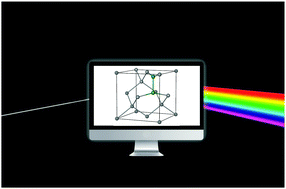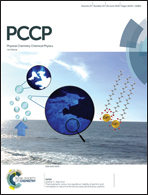Interstitial nitrogen atoms in diamond. A quantum mechanical investigation of its electronic and vibrational properties
Abstract
The electronic and vibrational features of the single- (I1N) and double- (I2N) nitrogen interstitial defects in diamond are investigated at the quantum mechanical level using a periodic supercell approach based on hybrid functionals constructed from all electron Gaussian basis sets within the CRYSTAL code. The results are compared with those of the well characterized 〈100〉 split self-interstitial defect (I2C). The effect of defect concentration has been investigated using supercells with different size, containing 64 and 216 atoms. Band structure, formation energy, charge and spin density distributions of each defect are analyzed. Irrespective of the defect concentration, these defects show important features for both IR and Raman spectroscopies. Stretching modes of the two atoms involved in the defect are calculated to be around 1837, 1761 and 1897 cm−1 for the I1N, I2N and I2C case, respectively. Since they are well removed from the one-phonon mode of pristine diamond (1332 cm−1), they are, in principle, detectable from the experimental point of view.



 Please wait while we load your content...
Please wait while we load your content...